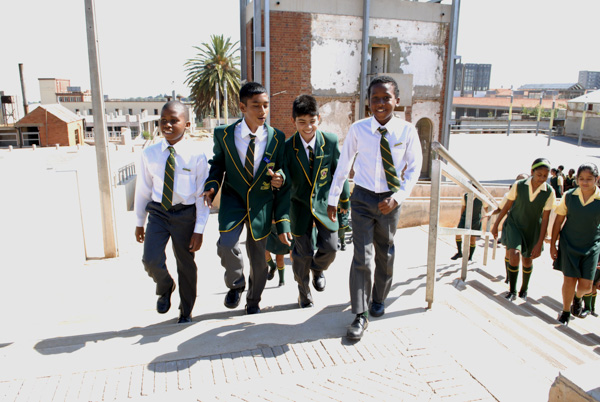Blog
History museums and social-change storytelling
How are museums educating young people about human rights and freedom? Following are selections from a virtual tour of some member museums in the International Coalition of Sites of Conscience — a worldwide network founded in 1999 that is “activating the power of places of memory to engage the public in connecting past and present to envision and shape a more just and humane future.”
 The Liberation War Museum in Bangladesh memorializes the deaths of millions of people in the 1971 war and celebrates the subsequent creation of a democratic government. Among other programs, the museum has sponsored a “Mobile Museum,” and has engaged young people to collect eye-witness accounts of the events of 1971, which it then deposits in its archives. In so doing, the Museum prompts a dialogue on genocide — and involves young people in the expansion of the historical record.
The Liberation War Museum in Bangladesh memorializes the deaths of millions of people in the 1971 war and celebrates the subsequent creation of a democratic government. Among other programs, the museum has sponsored a “Mobile Museum,” and has engaged young people to collect eye-witness accounts of the events of 1971, which it then deposits in its archives. In so doing, the Museum prompts a dialogue on genocide — and involves young people in the expansion of the historical record.
 One of several sites in South Africa, Constitution Hill is the location of a the notorious Old Fort Prison, better known simply as “Number Four,” which held many now-famous South Africans, including Nelson Mandela. In a powerful re-imagining of the place, it is now used as a Constitutional Court, as well as an educational center on the country’s politically repressive past. The site offers so-called lekgotla — public, non-hierarchical dialogues to decide on matters of social importance — on citizens’ constitutional rights and responsibilities.
One of several sites in South Africa, Constitution Hill is the location of a the notorious Old Fort Prison, better known simply as “Number Four,” which held many now-famous South Africans, including Nelson Mandela. In a powerful re-imagining of the place, it is now used as a Constitutional Court, as well as an educational center on the country’s politically repressive past. The site offers so-called lekgotla — public, non-hierarchical dialogues to decide on matters of social importance — on citizens’ constitutional rights and responsibilities.
 The Gulag Museum in Russia is located on the site of a Stalin-era labor camp called Perm 36, which was later turned into a prison that held political dissidents of the Soviet regime, right up through 1987. In a country where the federal government continues to take action against free assembly and a free press, the Gulag Museum may serve as an embarrassing display of the similarities between the old and new regimes. Or perhaps the museum relegates the terror of the Gulag labor camp system entirely to the past, thus presenting no challenge to present-day Russia or its government.
The Gulag Museum in Russia is located on the site of a Stalin-era labor camp called Perm 36, which was later turned into a prison that held political dissidents of the Soviet regime, right up through 1987. In a country where the federal government continues to take action against free assembly and a free press, the Gulag Museum may serve as an embarrassing display of the similarities between the old and new regimes. Or perhaps the museum relegates the terror of the Gulag labor camp system entirely to the past, thus presenting no challenge to present-day Russia or its government.
A 2011 story by Kate Taylor in the New York Times presents questions that are relevant to any history museum that deals with social injustice. Taylor wrote that the staff of the National Museum of African American History and Culture, set to open next year on the National Mall, was “grappling with fundamental questions about the museum’s soul and message. Among the biggest, of course, is: What story will it tell? As part of the Smithsonian, the museum bears the burden of being the ‘official’ — that is, the government’s — version of black history, but it will also carry the hopes and aspirations of African-Americans. … Will the story end with the country’s having overcome its shameful history and approaching a state of racial harmony and equality? Or will the museum argue that the legacy of racism is still dominant — and, if so, how will it make that case?”
That last question especially — how the story ends, and what it points to in today’s society — is a critical one for all museums, especially these “Sites of Conscience” that have as part of their very mission to address the legacy of injustices in their countries. (The National Museum of African American History and Culture is not a “Site of Conscience,” at least not yet.) These museums and memorials would seem to be most necessary — and least tolerated — in countries with repressive governments. But even in the freest of countries, the question still stands: What stories does a museum tell, and how do they relate to the “official” story?
